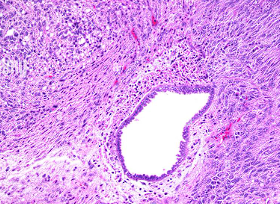Mycetoma
The Mycetoma Research Centre (MRC) in Khartoum, Sudan, has been completely destroyed during the ongoing civil war. This facility was the only one in the world dedicated to studying mycetoma, a debilitating neglected tropical disease. Established in 1991, the MRC treated approximately 12,000 patients annually and played important role in global training programs related to mycetoma. The conflict between the Sudanese army and the paramilitary Rapid Support Forces has caused damage to the centre, resulting in the loss of critical biological data accumulated over 40 years.
About Mycetoma
- Mycetoma is caused by bacterial or fungal infections that typically enter the body through cuts in the skin. It leads to severe tissue damage, swollen limbs, and deformities.
- It was first documented in the mid-19th century in Madurai, India, and initially termed “Madura Foot.”
- Over 70 different species of bacteria and fungi have been identified as causative organisms.
- Symptoms include swollen feet and growths resembling barnacles.
Vulnerable Groups
- Commonly affects males aged 15–30 years in developing nations.
- Individuals with low socioeconomic status, particularly agricultural workers, laborers, and herdsmen, are most at risk.
Geographical Distribution
- Mycetoma is endemic in tropical and subtropical regions known collectively as the “Mycetoma Belt,” including countries like India, Sudan, Mexico, Chad, Ethiopia, Mauritania, Yemen, Somalia, Venezuela, Senegal, and Thailand.
- The highest number of cases have been reported from Mexico and Sudan.
Mode of Transmission
The infection usually occurs when the organism enters through minor wounds, especially thorn pricks.
- Walking barefoot and manual outdoor work significantly increase risk.
- Human-to-human transmission does not occur.
Treatment
- Bacterial mycetoma: Treated with antibiotics.
- Fungal mycetoma: Managed with a combination of antifungal therapy and surgical intervention.
- Treatment is often prolonged, costly, associated with significant side effects, and outcomes are frequently unsatisfactory.
- Amputation is sometimes necessary in advanced fungal infections.
Prevention and Control
- No global surveillance system; Sudan is the only country with a specific control program.
- Preventive measures include wearing footwear to reduce exposure.
- Awareness generation and early case detection are crucial.
Impact of the Destruction
The destruction of MRC has caused a major setback for global health efforts. Its loss will disproportionately affect vulnerable communities reliant on manual labour, as mycetoma can severely limit their ability to work. The ongoing conflict has already displaced over 12 million people and crippled Sudan’s healthcare system. The destruction of the MRC not only hinders local treatment efforts but also impacts global research initiatives. The loss of its biological banks means that decades of research data are now inaccessible. This setback raises concerns about the continuity of training and education in mycetoma management.
Month: Current Affairs - April, 2025
Category: Health Current Affairs








